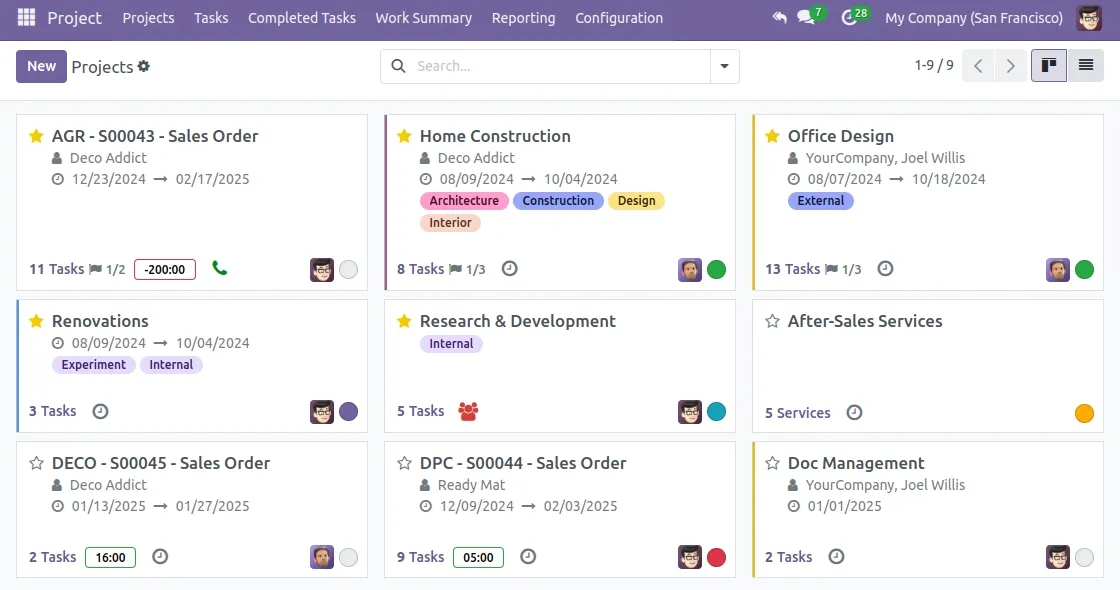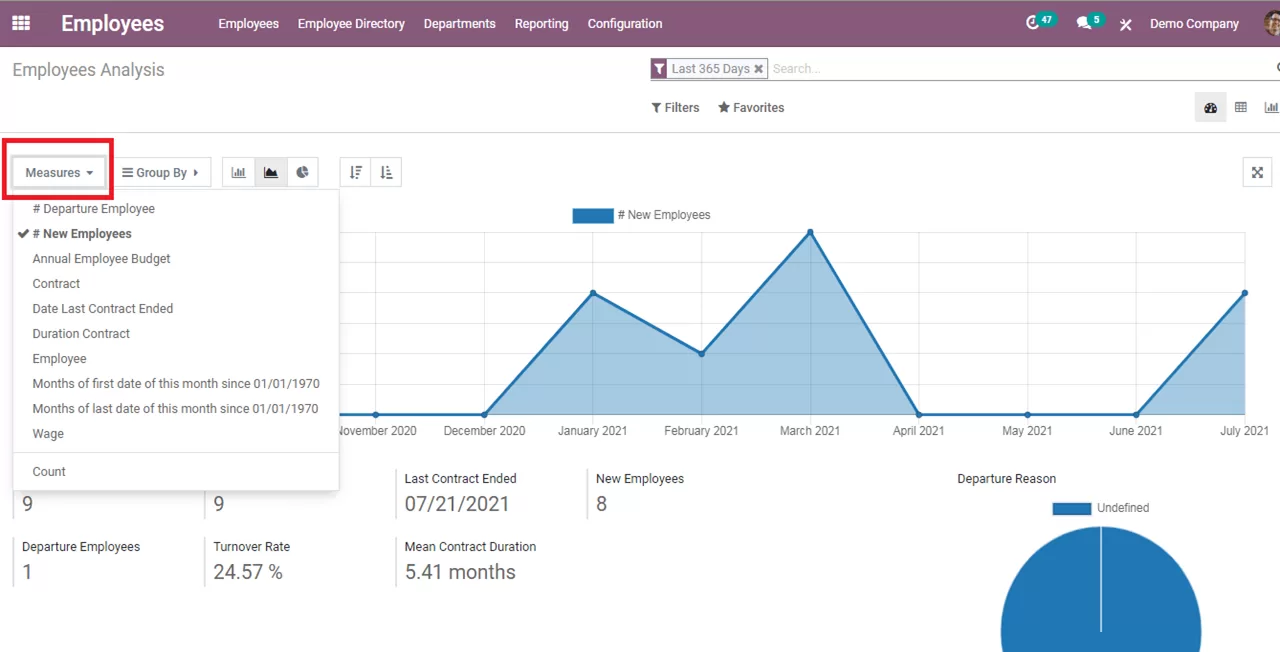In the current business world where data rules, taking informed decisions from real-time employee data is not a luxury anymore but a requirement. Human Resource (HR) functions are transforming at a rapid pace, leaving behind the age-old administrative roles to become strategic assets in organizations. At the heart of this revolution lies the power to extract and analyze employee data. That is where Reporting in Odoo Employees becomes a game-changer.

What are Odoo Employees?
Odoo is an open-source suite of business applications that is capable of addressing the needs of any-sized business. Odoo’s Employees module is a very powerful HR management system that can maintain employee records, contracts, job roles, attendance, time off, appraisals, and the like. But more practically useful is its powerful and integrated reporting facility.
The Reporting in Odoo Employees feature converts raw data into understandable information. It assists HR departments to confirm how the workers are performing, increase productivity, and assist in planning. Whether you need a high-level overview or in-depth analysis, Odoo empowers you with the tools to achieve greater insight into the data.

Why is HR reporting important?
Main Facets in Reporting in Odoo Employees
1. Customizable Dashboards
Odoo enables you to build your own custom dashboards that include the most important metrics to you. Such as headcount, turnover rate, or departmental metrics. These dashboards provide an instant, visual overview of the organizational health of the HR.
HR managers, department leaders or executives can customize dashboards to display real-time data that is suited to their requirements. The simplicity of drag-and-drop and filter functionalities enables users to change views and monitor KPIs efficiently.

2. Advanced Data Visualization
Charts and graphs to present data assist in recognizing trends and patterns that may be overlooked in raw data tables. Odoo provides numerous means of visualizing this data, such as:
- Bar charts
- Pie charts
- Line graphs
- Pivot tables
3. Real-Time Reporting
Odoo refreshes its reports in real-time, thus the users get to view the most up-to-date information. This is especially important for time-sensitive processes such as payroll, compliance reporting, or verifying the attendance of employees.
Real-time data enables companies to act fast on problems that arise, for example, more individuals being out, contracts expiring, or lower scores on performance.
4. Integration with Other Modules
One of the strongest points of Odoo is the way all its modules are integrated. The Employees module can use data from:
- Payroll: For pay analysis and reporting salaries.
- Time Off: For absence reporting and absenteeism reports.
- Appraisals: for performance summaries and feedback
- Hiring: For tracking applicants and measuring hiring success. Learn More!
This connection guarantees that stories are complete and consistent throughout the platform.
Real-World Use Case: Improving Attendance Tracking
Take the example of a mid-size company with frequent absenteeism problems among employees. HR can produce attendance reports straight away, grouped by departments and periods, based on the Reporting feature of the Odoo Employees module. They find patterns showing that certain departments have more absences on particular days.
With this knowledge, HR arranges meetings with team leaders to learn the main reasons behind and suggests flexible work arrangements. Because of this, absenteeism decreases by 20% in the next three months.
ZKTeco Biometric Device Integration with Odoo V17 HR App
Automatic integration and synchronization between attendance machine and Odoo. Easy for HR to track employee attendance and timings. Manage employee’s data via a unique ID. Will accommodate multiple shifts and flexible timings.
Best Practices for HR Reporting Optimization in Odoo
- To gain the best from the reporting tools of Odoo Employees, follow these best practices:
- Standardize entry of data: It must be consistent while entering employee data throughout the system.
- Train HR Personnel: Provide training to introduce HR users to filtering, exporting, and presenting data.
- Use Tags and Categories: Organize employees with tags (such as contract type, department, or seniority) for improved reporting.
- Automate Reports: Automate critical reports to be run and sent automatically to save time.
- Review Dashboards Periodically: Update dashboards with applicable KPIs and remove unused ones to keep them simple.
Conclusion
Odoo Employees Reporting is a vital tool for today’s HR departments willing to work cost-effectively and strategically. It provides a robust mix of real-time analytics, user-definable dashboards, and graphical rendition of data. With the adoption of Odoo reporting functionality, businesses can gain greater employee insight, improve performance, and bring HR strategies in sync with business objectives. As companies continue to embrace digital transformations, employing tools like Odoo will simplify HR work and assist leaders in obtaining the information they need to thrive in an ever-evolving business landscape.
Get in touch with Certified Odoo ERP Implementation Experts Today!


Configure & Manage Employee Appraisals in Odoo Employees
May 8, 2025[…] Odoo Employees‘ appraisal module is meant to help organisations with proper employee assessment. You can create appraisal templates, book reviews, collect feedback from multiple stakeholders (self-assessment not being an exception), and monitor the whole process from start to completion. Employee appraisals in Odoo Employees are made accurate, properly documented, and per the company’s goals. […]